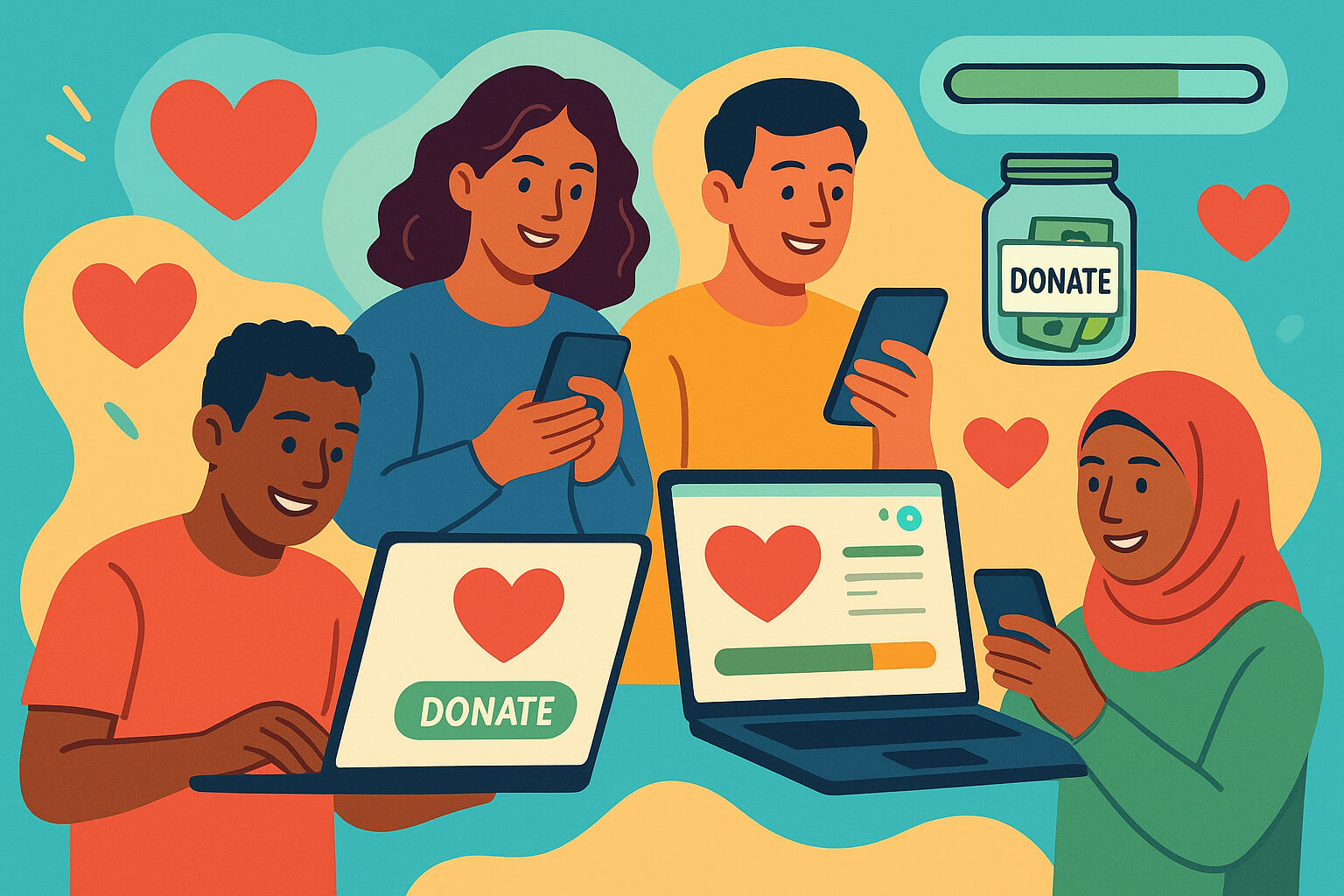September 04, 2025

Non-profits have always relied on the generosity of supporters to drive their missions forward. While traditional fundraising methods like gala events, direct mail, and grant writing remain staples, the digital age has opened up a more personal, scalable, and empowering approach: peer-to-peer (P2P) fundraising.
Peer-to-peer fundraising doesn’t just raise money—it builds communities, strengthens advocacy, and inspires donors through authentic, personal stories. For non-profits looking to grow their reach and deepen engagement, P2P fundraising is more than a tool—it’s a transformative strategy.
Peer-to-peer fundraising is a model where supporters raise funds on behalf of an organization by creating personalized campaign pages and sharing them within their own social circles—family, friends, coworkers, and broader networks.
Instead of the non-profit making the ask directly, the ask comes from a trusted voice in the donor’s life. This distributed approach multiplies both visibility and potential donors.
With platforms like Classy, GoFundMe Charity, and JustGiving, launching a campaign has become simple—even for individuals with no fundraising experience.
At its core, peer-to-peer fundraising leverages one of the most powerful forces in giving: trust. People are far more likely to give when someone they know and trust makes the request.
According to the Nonprofit Tech for Good Report, nearly 33% of donors give because of a personal connection. Traditional outreach strategies (emails, ads, or cold calls) can’t replicate the authenticity of a friend sharing their passion for a cause.
This is particularly effective with younger generations, who value community-driven action and collaboration. As discussed in The Future of Learning and Innovations in Education, engagement is highest when people feel like active participants—not just passive donors.
Peer-to-peer fundraising makes supporters part of the movement.
To harness the full potential of P2P fundraising, non-profits must do more than just offer a platform—they must empower their fundraisers.
Select a user-friendly fundraising platform with easy customization, mobile optimization, social sharing, and real-time tracking. Popular options include:
Offer downloadable kits with:
The easier it is for supporters to share their campaign, the more likely they are to follow through.
Create urgency and momentum with:
Publicly displaying progress motivates both the campaigner and their supporters.
Acknowledge efforts with:
As shown in Mentorship Matters: Guiding Young Minds to Success, people thrive when they feel valued and seen—and fundraisers are no different.
Non-profits large and small have used peer-to-peer fundraising to raise millions, build communities, and drive awareness.
Over time, peer-to-peer fundraising can become a cornerstone of your donor engagement strategy, not just a one-time event.
Peer-to-peer fundraising is more than a digital tactic—it’s a cultural shift. It puts the power in the hands of everyday people and transforms them into champions for change. By giving supporters the tools to tell their stories and rally their networks, non-profits unlock exponential growth in visibility, engagement, and funding.
In an age defined by connection, personalization, and shared values, P2P fundraising is perfectly positioned to help organizations thrive, adapt, and build meaningful communities around their cause.
For more tools, case studies, and best practices on non-profit sustainability and fundraising, explore:
Stay up to date with the latest tips, expert insights, product reviews, and step-by-step guides to help you grow, create, and succeed—no matter your industry or passion.